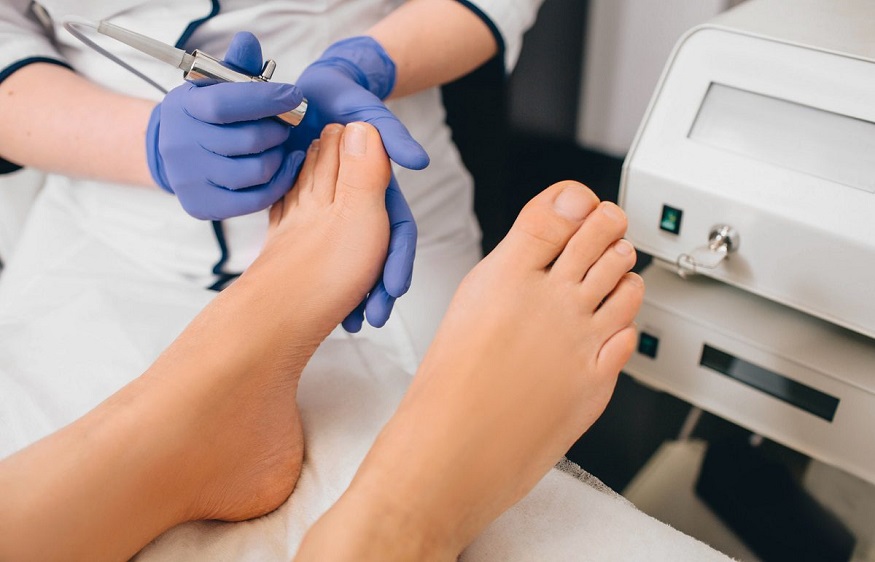Your healthcare professional will check your nails and may collect nail clippings or scrape under your nails to remove debris. These samples are sent to a laboratory to determine the source of your symptoms.
Other illnesses, such as psoriasis, can resemble a nail fungal infection. In addition, microorganisms like yeast and bacteria may also infect nails. Determine the most effective treatment for your infection by determining its aetiology.
Treatment
Not always, a treatment for toenail fungus is necessary. And occasionally, self-care and over-the-counter remedies are sufficient to treat the infection. However, obtain medical attention if your situation does not improve. The severity of your ailment and the type of fungus causing it will determine your treatment. Results can take months to manifest. And even if your nail health improves, it is normal for infections to recur.
Medications
Your doctor may prescribe antifungal medications to be taken orally (orally) or applied to the nail.
- Oral antifungal medicines. These medications are generally the first option. Itraconazole represents one possibility (Sporanox). These medications promote the growth of a healthy new nail that gradually replaces the infected portion.
- This sort of medication is normally taken daily for six to twelve weeks. However, you won’t see the final result of treatment until the nail entirely regrows. It may take at least four months to eradicate infection. The treatment success rates of these medications appear to be reduced in persons over 65 years of age.
- Antifungal medications taken orally may produce negative effects such as dermatitis and liver damage. Or they may interact with prescribed medications. You may need periodic blood tests to monitor your response to these medications. Patients with liver illness, congestive heart failure, or who are on specific medications may not be recommended oral antifungal medications by health care providers.
- Medicated nail lacquer Your doctor may prescribe an antifungal nail polish known as ciclopirox (Penlac). You apply it daily to your affected nails and surrounding skin. After seven days, the accumulated layers are wiped clean with alcohol, and new treatments are initiated. This nail paint may need to be applied daily for nearly a year.
- An antifungal nail lotion. Your doctor may recommend an antifungal cream, such as efinaconazole (Jublia) or tavaborole (Kerydin). After soaking, you apply this product to your affected nails. These lotions may function more effectively if the nails are initially thinning. This allows the drug to penetrate the hard nail surface and reach the fungus beneath.
- To thin nails, you apply urea-containing over-the-counter moisturiser. Or, your healthcare professional may use a file or other instrument to thin the nail’s surface (debride).
- Antifungal nail lotions may cause skin irritation.
Surgery
Your doctor may temporarily remove the nail so that the antifungal medication can be given directly to the infection under the nail.
Surgical removal of the nail and its root is the most successful, albeit least common, treatment option.






